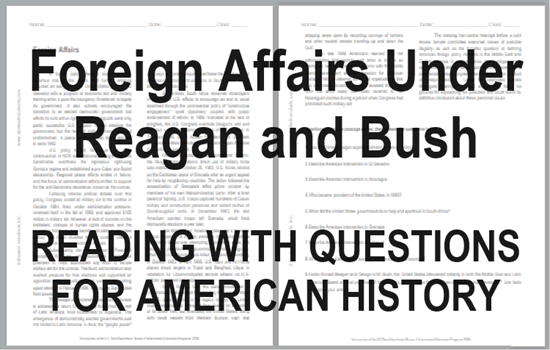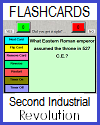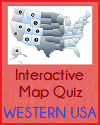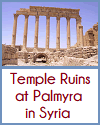| Foreign Affairs Under Reagan and Bush Reading with Questions |
|---|
| www.studenthandouts.com ↣ American History ↣ American History Readings with Questions |
In foreign policy, Reagan sought a more assertive role for the nation, and Central America provided an early test. The United States provided El Salvador with a program of economic aid and military training when a guerrilla insurgency threatened to topple its government. It also actively encouraged the transition to an elected democratic government, but efforts to curb active right wing death squads were only partly successful. U.S. support helped stabilize the government, but the level of violence there remained undiminished. A peace agreement was finally reached in early 1992.
 U.S. policy toward Nicaragua was more controversial. In 1979 revolutionaries calling themselves Sandinistas overthrew the repressive right-wing Somoza regime and established a pro-Cuba, pro-Soviet dictatorship. Regional peace efforts ended in failure, and the focus of administration efforts shifted to support for the anti-Sandinista resistance, known as the contras.
U.S. policy toward Nicaragua was more controversial. In 1979 revolutionaries calling themselves Sandinistas overthrew the repressive right-wing Somoza regime and established a pro-Cuba, pro-Soviet dictatorship. Regional peace efforts ended in failure, and the focus of administration efforts shifted to support for the anti-Sandinista resistance, known as the contras.
Following intense political debate over this policy, Congress ended all military aid to the contras in October 1984, then, under administration pressure, reversed itself in the fall of 1986, and approved $100 million in military aid. However, a lack of success on the battlefield, charges of human rights abuses, and the revelation that funds from secret arms sales to Iran (see below) had been diverted to the contras undercut congressional support to continue this aid. Subsequently, the administration of President George H.W. Bush, who succeeded Reagan as president in 1989, abandoned any effort to secure military aid for the contras. The Bush administration also exerted pressure for free elections and supported an opposition political coalition, which won an astonishing upset election in February 1990, ousting the Sandinistas from power. The Reagan administration was more fortunate in witnessing a return to democracy throughout the rest of Latin America, from Guatemala to Argentina. The emergence of democratically elected governments was not limited to Latin America; in Asia, the "people power" campaign of Corazón Aquino overthrew the dictatorship of Ferdinand Marcos, and elections in South Korea ended decades of military rule. By contrast, South Africa remained intransigent in the face of U.S. efforts to encourage an end to racial apartheid through the controversial policy of "constructive engagement," quiet diplomacy coupled with public endorsement of reform. In 1986, frustrated at the lack of progress, the U.S. Congress overrode Reagan's veto and imposed a set of economic sanctions on South Africa. In February 1990, South African President F.W. de Klerk announced Nelson Mandela's release and began the slow dismantling of apartheid. Despite its outspoken anti-communist rhetoric, the Reagan administration's direct use of military force was restrained. On October 25, 1983, U.S. forces landed on the Caribbean island of Grenada after an urgent appeal for help by neighboring countries. The action followed the assassination of Grenada's leftist prime minister by members of his own Marxist-oriented party. After a brief period of fighting, U.S. troops captured hundreds of Cuban military and construction personnel and seized caches of Soviet-supplied arms. In December 1983, the last American combat troops left Grenada, which held democratic elections a year later. The Middle East, however, presented a far more difficult situation. A military presence in Lebanon, where the United States was attempting to bolster a weak, but moderate pro-Western government, ended tragically, when 241 U.S. Marines were killed in a terrorist bombing in October 1983. In April 1986, U.S. Navy and Air Force planes struck targets in Tripoli and Benghazi, Libya, in retaliation for Libyan-instigated terrorist attacks on U.S. military personnel in Europe. In the Persian Gulf, the earlier breakdown in U.S.-Iranian relations and the Iran-Iraq War set the stage for U.S. naval activities in the region. Initially, the United States responded to a request from Kuwait for protection of its tanker fleet; but eventually the United States, along with naval vessels from Western Europe, kept vital shipping lanes open by escorting convoys of tankers and other neutral vessels traveling up and down the Gulf. In late 1986 Americans learned that the administration had secretly sold arms to Iran in an attempt to resume diplomatic relations with the hostile Islamic government and win freedom for American hostages held in Lebanon by radical organizations that Iran controlled. Investigation also revealed that funds from the arms sales had been diverted to the Nicaraguan contras during a period when Congress had prohibited such military aid. The ensuing Iran-contra hearings before a joint House Senate committee examined issues of possible illegality as well as the broader question of defining American foreign policy interests in the Middle East and Central America. In a larger sense, the hearings were a constitutional debate about government secrecy and presidential versus congressional authority in the conduct of foreign relations. Unlike the celebrated Senate Watergate hearings 14 years earlier, they found no grounds for impeaching the president and could reach no definitive conclusion about these perennial issues. Directions: Read the text above, then answer the questions below. 1. How did Ronald Reagan approach American foreign policy? 2. Describe American intervention in El Salvador. 3. Describe American intervention in Nicaragua. 4. Who became president of the United States in 1989? 5. What did the United States government do to help end apartheid in South Africa? 6. Describe American intervention in Grenada. 7. Describe American intervention in Lebanon. 8. What were the Iran-hostage scandal and the Iran-contra hearings? 9. Under Ronald Reagan and George H.W. Bush, the United States intervened militarily in both the Middle East and Latin America. Based on what you know of these events, do you agree that American intervention was necessary? Use facts to support your answer. Click here to print this worksheet. Answers will vary. |
 |  |  |  |  |  |
| UNIT I: | Early America | UNIT IX: | Discontent and Reform | ||
| UNIT II: | Colonial Period | UNIT X: | War, Prosperity, and Depression | ||
| UNIT III: | American Revolution | UNIT XI: | New Deal and World War II | ||
| UNIT IV: | New National Government | UNIT XII: | Postwar America | ||
| UNIT V: | Westward Expansion | UNIT XIII: | Decades of Change | ||
| UNIT VI: | Sectional Conflict | UNIT XIV: | New Conservatism | ||
| UNIT VII: | Civil War and Reconstruction | UNIT XV: | Into the Twenty-first Century | ||
| UNIT VIII: | Growth and Transformation | UNIT XVI: | Polarization and Deglobalization |
| www.studenthandouts.com ↣ American History ↣ American History Readings with Questions |








